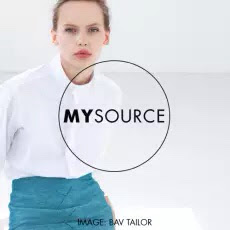Mind you, coffee has benefits above and beyond the obvious slap to the nervous system and creative glands. Throwing away the grounds after you've extracted your mug of go-juice is a waste of a handy resource. It's been long known that spent grounds can go into compost. In fact, Starbucks will give you a bagful if you ask nicely. The aromatic powder is also good at keeping cats off your lawn if they have a tendency to use it as an alfresco toilet.
But it's the naturally deodorising properties of coffee that have the fashion world shaking out their filters. Once stripped of its more fragrant compounds so you don't smell like a fresh mug of Sumatran Blend, coffee grounds have all sorts of uses in clothing.
American Eagle have laden their new range of jeans, Denim X Café and Flex/Café, with 2 and a quarter grams of spent coffee grounds per garment. They claim that it wicks away moisture and protects against UV rays. The deodorising benefit of the grounds also mean that you can get away with a few more wears before washing–an environmental benefit that we've long preached about here at The Pier.
American Eagle aren't alone in seeing the benefits of scooping out the contents of that old cafetière. Good old M&S launched a range of shoes earlier in the year made from waste that included plastic bottles and yes–those grounds. Knicker specialists Sloggi released a range of underwear around the same time made from waste coffee. Focussing on the deodorising properties of the grounds, a British startup called The Ministry Of Supply brought out a set of socks loaded with the stuff. How they deal with a heavy case of the caffeine sweats after an all-nighter on the java is not adequately explained.
All of which goes to prove one point that's a key tentpole of ethical fashion. Innovation is key, and no resource, however unlikely, should be overlooked in the quest for new and interesting products. It's a criminal waste to chuck away your grounds when they could go onto the garden. If they can be of added benefit in clothing that helps to keep landfill sites un-used, then that's all to the good.
Espresso, anyone?




